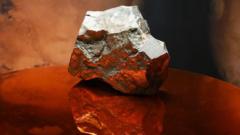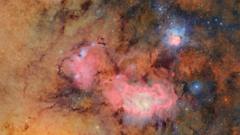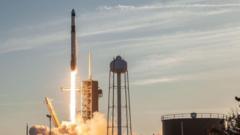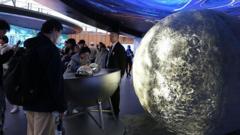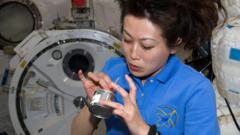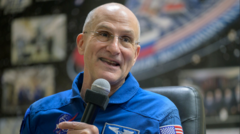Sierra Space's innovative technology operates under simulated lunar conditions, seeking to extract oxygen from moon-like soil. The process aims to support long-term lunar bases and reduce mission costs considerably.
Sierra Space Develops Lunar Oxygen Production Technology
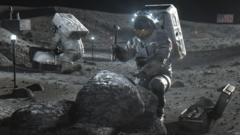
Sierra Space Develops Lunar Oxygen Production Technology
Engineers at Sierra Space are pioneering a device aimed at generating oxygen from lunar regolith, essential for future moon missions.
Inside a large, specially-designed chamber that mimics the conditions on the moon, engineers from Sierra Space are advancing their ambitious vision for lunar exploration. At the heart of this endeavor is a unique contraption—an intricately designed machine tasked with converting lunar regolith, a gritty dust similar to actual lunar soil, into breathable oxygen.
During summer testing at NASA's Johnson Space Center, the team utilized this sophisticated device to heat regolith to over 1,650 degrees Celsius, triggering a chemical reaction that produced oxygen-containing molecules. Brant White, a program manager at Sierra Space, commented, “We’ve tested everything we can on Earth now. The next step is going to the moon.”
This technology is not just a solitary effort but is part of a broader push to create autonomous systems essential for sustaining a future human presence on the moon. Astronauts stationed on a lunar base will need oxygen for breathing but will also require it for propellant to fuel spacecraft destined for deeper space exploration, including to Mars.
The extraction of oxygen from lunar soil could significantly reduce costs that would arise from transporting oxygen and other materials from Earth. White highlighted the potential for saving billions of dollars in mission expenses.
Sierra Space's device operates within a chamber that simulates lunar pressure and temperature. Yet, the challenges of extracting oxygen are compounded by the abrasive nature of regolith, with engineers noting the wear and tear it inflicts on machinery. Furthermore, testing the system under actual lunar gravity will be vital; it may take until 2028 or later before the technology can be validated on the moon itself.
Notably, different extraction technologies face unique challenges from the moon's low gravity. Research by Paul Burke from Johns Hopkins University revealed that traditional electrolysis methods could struggle with bubble formation and detachment due to the moon's weaker gravitational pull. Creative solutions like vibrating the machines or using smoother electrodes are being explored.
Sierra Space's method utilizes a carbothermal process which minimizes the chances of oxygen bubbles getting trapped, making it more efficient in lunar conditions. Burke estimates that each astronaut would require oxygen extracted from approximately two to three kilograms of regolith daily, although recycling could lessen this demand.
Additionally, the significance of oxygen extends to its role in producing fuel oxidizers, underpinning the future of space exploration. The company's system combines carbon recycling with oxygen extraction to optimize resource use.
Palak Patel from MIT is also working on extracting resources from lunar soil, emphasizing the goal of minimizing supply missions from Earth. Her group's system employs sound waves to release oxygen bubbles formed on electrodes, addressing the challenges identified by Burke.
Patel's team is exploring the extraction of materials such as iron and titanium, which could significantly benefit lunar construction efforts. They have even experimented with melting regolith into glass-like bricks, which could serve as resilient building materials for lunar habitats.
In conclusion, the push to leverage lunar resources not only hinges on oxygen extraction technologies but also extends to the broader utilization of lunar regolith for various critical applications in sustaining human presence beyond Earth.

